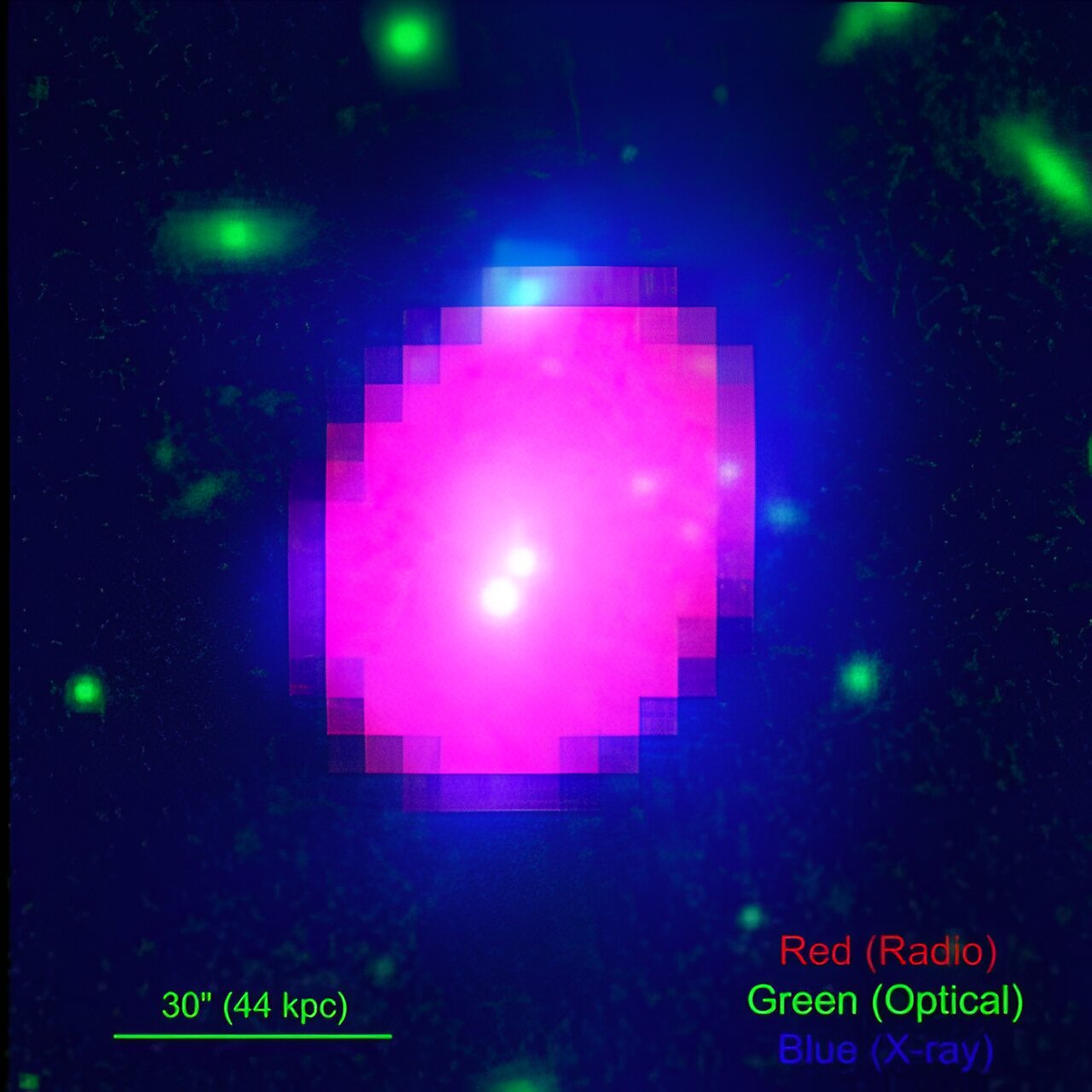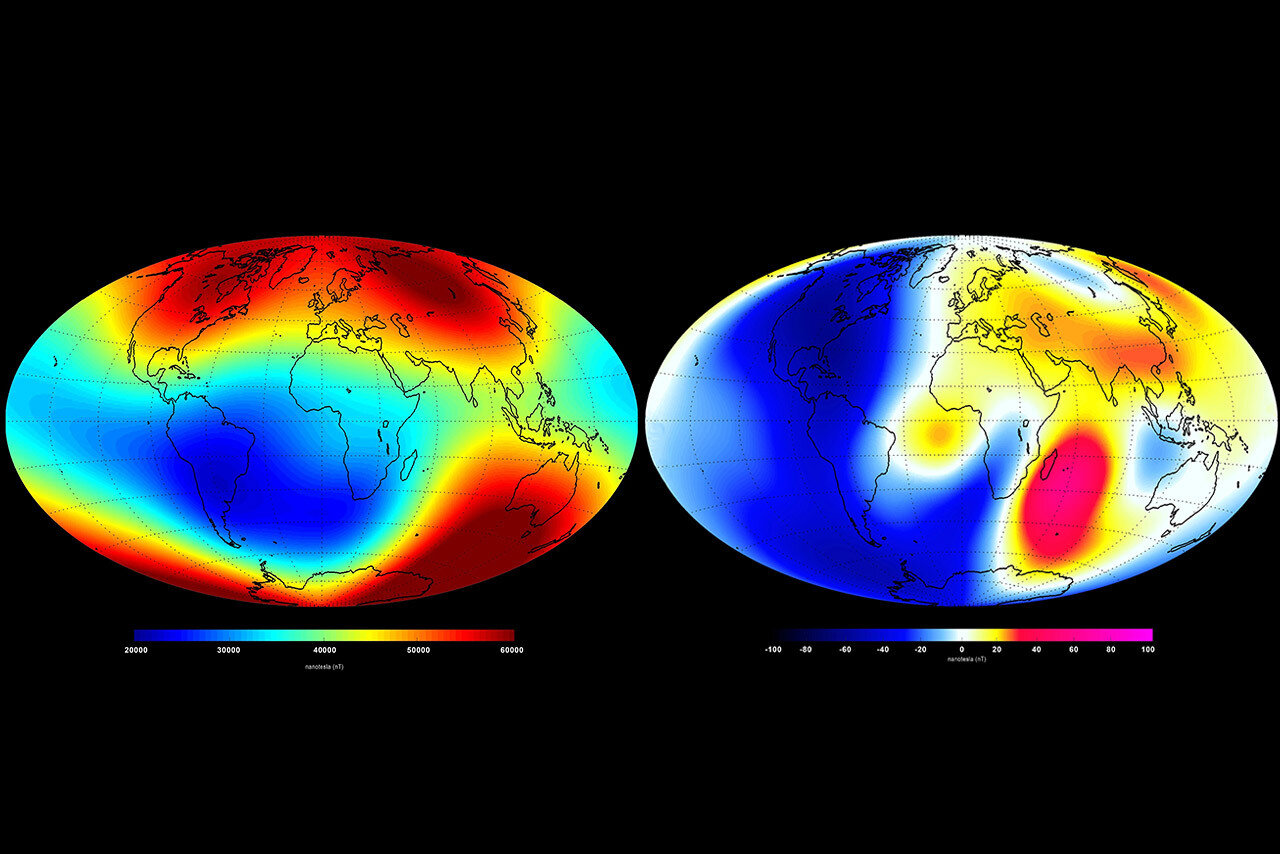A fading cold front has been detected in a massive galaxy cluster
RGB (tricolor) image of Abell 2566 obtained by a suitable combination of emission measured at 1.4 GHz with VLA C-configuration (red), Pan-STARRS r-band (green) and Chandra X-ray soft band (blue). Credit: Kadam et al, 2024
x close
RGB (tricolor) image of Abell 2566 obtained by a suitable combination of emission measured at 1.4 GHz with VLA C-configuration (red), Pan-STARRS r-band (green) and Chandra X-ray soft band (blue). Credit: Kadam et al, 2024
Analyzing data from NASA’s Chandra X-ray Observatory, astronomers from India and South Africa investigated a massive galaxy cluster known as Abell 2566. They detected infalling cold fronts in the cluster’s intracluster medium (ICM). The finding was reported in a research paper published May 17 on the preprint server arXiv.
Clusters of galaxies contain up to thousands of galaxies bound together by gravity. They are the largest known gravitationally bound structures in the universe and could serve as excellent laboratories for the study of galaxy evolution and cosmology.
In general, so-called cold fronts are sharp discontinuities in surface brightness seen in X-ray images, where a drop in surface brightness and gas density is accompanied by a jump in gas temperature, with the denser region being cooler than the rarer one. region.
Now, a team of astronomers led by Sonali K. Kadam of Swami Ramanand Teerth Marathwada University in India has identified such features in Abell 2566 – a cool core cluster of galaxies at a redshift of 0.08, with an estimated mass of about 217 trillion solar masses. .
By analyzing Chandra images and archival radio data, Kadam’s team found evidence of gas jets in the core of Abell 2566, along with a pair of cold fronts in its environment.
First, the collected images revealed an unusual morphology of the ICM distribution – in the form of spiral-shaped gas jetting along with edges in the surface brightness distribution. Spectral analysis performed by astronomers then confirmed the association of these morphological discontinuities with cold fronts.
“Detailed analysis of the sectoral brightness profiles along these edges confirms their origin due to jets of gas, referred to as jetting cold fronts,” the researchers explained.
In addition, the observations identified an offset of about 22,200 light-years between the brightest cluster of galaxies (BCG) and the peak of the X-ray emission, as well as a close connection of the BCG to a neighboring system. The authors of the paper hypothesize that this offset may have given the sloshing structure in Abell 2566.
Based on the collected data, astronomers hypothesize that the observed features and complex morphology of the plasma distribution in Abell 2566 share a common origin – as they may be caused by a minor merger. The team noted that the subcluster may have disrupted the main cluster by displacing its gravitational potential well.
“Such displacement further leads to the formation of cold fronts, concentrically shaped boundaries in the surface brightness produced by the core gas as it moves around the potential well. These cold fronts further develop spiral patterns in the plasma distribution provided the slashing direction is close to the plane of the sky.” the researchers concluded.
More information:
SK Kadam et al., Sloshing Cold Fronts in Galaxy Cluster Abell 2566, arXiv (2024). DOI: 10.48550/arxiv.2405.10475
Information from the diary:
arXiv
© 2024 Science X Network














Post Comment